Keycaps: The Essential Guide for Keyboard Enthusiasts
Whether you’re an expert or just starting out, this guide will help you achieve the keyboard of your dreams
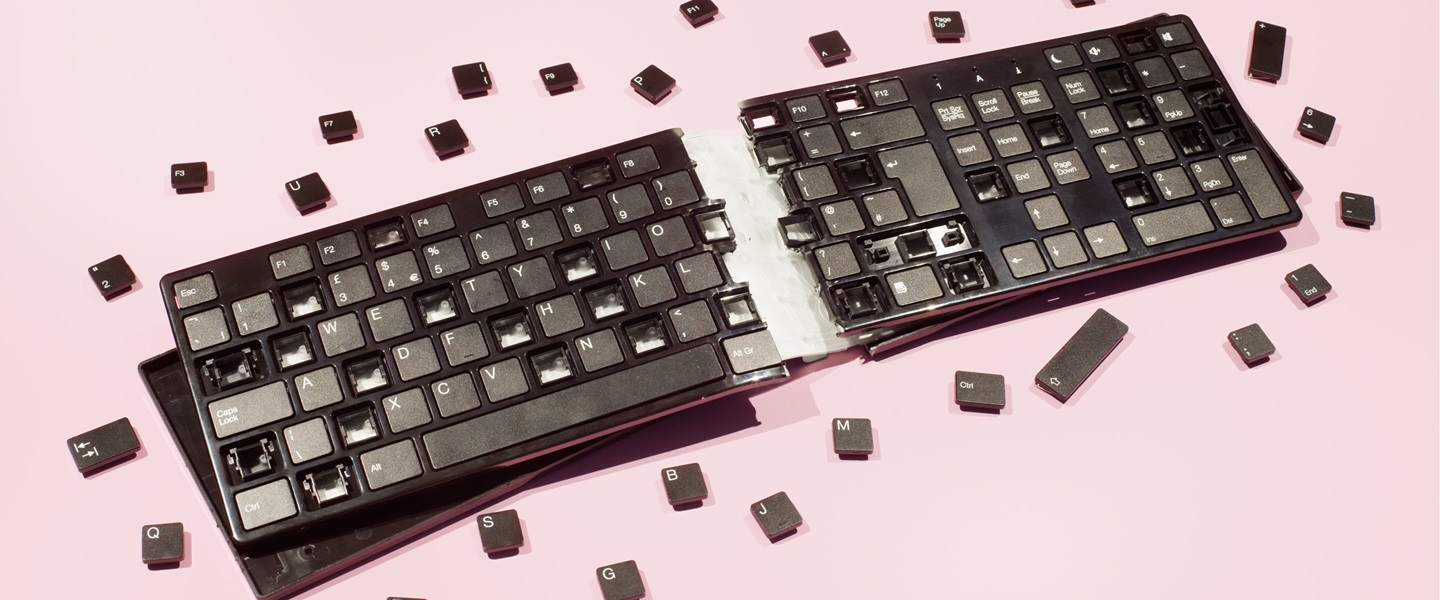
Whether you’re an expert or just starting out, this guide will help you achieve the keyboard of your dreams
Creating custom keyboards is an engaging hobby, giving the creatively minded precise control over their hardware’s look and feel. Whether you’re a hobbyist just setting out on your journey or a longtime keyboard maestro, one of the most important aspects of creating a custom keyboard is selecting the right keycaps. This guide will break down everything you need to know about keycaps and where to find them — or even make them — so that you, too, can create the keyboard of your dreams.
Keycap profiles are what classify the size and shape of a keycap, which is the piece of a keyboard that your fingers contact when you type.
If you look at a mechanical keyboard from the side, you’ll see that either every keycap has an identical size and shape or slight variations exist between rows. This is one of the primary variations between keycaps: whether the layout is uniform or “sculpted” to meet your fingertips. Other variations include the height of a keycap, as well as the shape of its top.

OEM (Original Equipment Manufacturer) denotes a size and shape of a key cap common to many keyboards. They are typically of medium height and have an angled top. OEM keycaps are usually slightly sculpted.
Cherry keycaps are similar to OEM keycaps. They are also medium height, have similarly sculpted designs, and their tops are usually angled. However, Cherries have less aggressive sculpting than their OEM counterparts.
SA keycaps are some of the tallest on the market, which makes them more sculptable. Their tops are both angled and concave, with the “S” meaning “spherical.” The indent leaves space for one’s fingers to rest on.
Flat keycaps don’t fit a single profile but are an overarching category representing a common design choice. They feature a flat surface without any angled or convex shapes.
The “Chiclet” keycap was nicknamed as such due to its resemblance to the brand of chewing gum. They feature a uniform look that seems to barely rise from the keyboard’s surface.
Read “The Complete Guide to Keycap Profiles” for more information.
The tactile feedback of a keyboard is important to many typists, and keycaps play a large role in determining a keyboard’s feel. Mechanical keyboards are notable for their distinct feeling, but the exact nature of that feeling will depend on the keycaps being used and the materials they’re made out of.
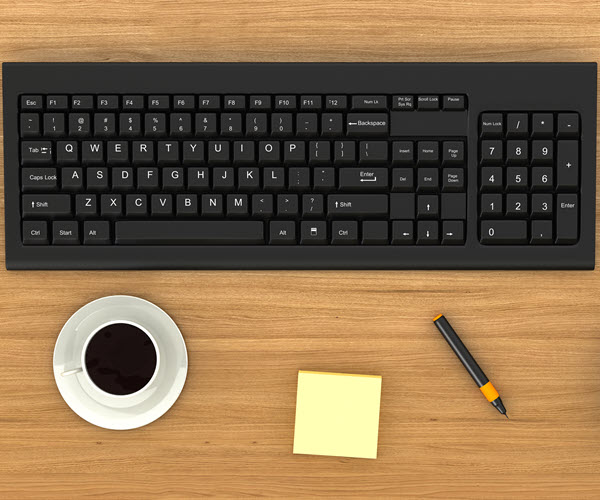
Using thicker or thinner keycaps will change the sensation you feel while typing. Additionally, some materials, like ABS plastic, are smooth. Others, like PBT plastic, have a grippier, textured surface.
For more information, read our full blog post “What Are Mechanical Keycaps?”
Did You Know? The HHKB layout repositions the Control key to make frequently used shortcuts faster and more ergonomic. Learn More.
Check out our full blog post “What Are Custom Keycaps?” for more information.
Polybutylene terephthalate plastic (PBT) is used for everything from auto part connectors to television accessories, and it’s also a common material for keycaps. The plastic is very durable, which makes it perfect for a high-usage component.
PBT keycaps are made through injection molding. Factories take thermoplastic compounds and melt them into a liquid that’s then injected into molds. Those molds form a plastic keycap. The process is more difficult for PBT due to its superior resistance to heat and chemicals.
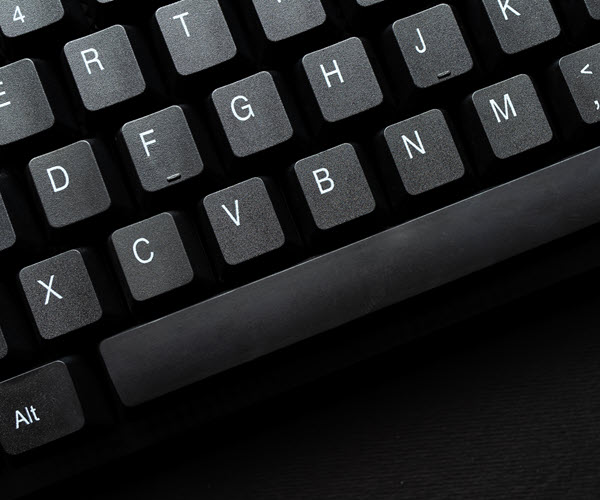
Letters are pressed directly onto keys with ink. This method is rarely found among PBT keycaps.
A laser beam burns away the top layer of plastic to either color or engrave the legend onto keycaps. The resulting grooves can then be filled with additional coloring to make the legend stand out more.
One color of plastic is injected into the legend mold, and another dye is injected around the legend to form the rest of the keycap. It’s the most expensive method, but it produces the highest quality keys.
Read our blog post “PBT Keycaps: Everything There Is to Know” for more information.
Cherry MX keycaps are compatible with Cherry MX-style switches, such as Cherry MX Blues and Cherry MX Browns. However, the Cherry MX style of switches is compatible with many other key switches that are produced by other companies. The fundamental identifier is the cross-shaped mount on the underside of the cap.
Cherry MX keycaps, and the switches beneath them, are some of the most common on the market. Here are some of the differences between styles:
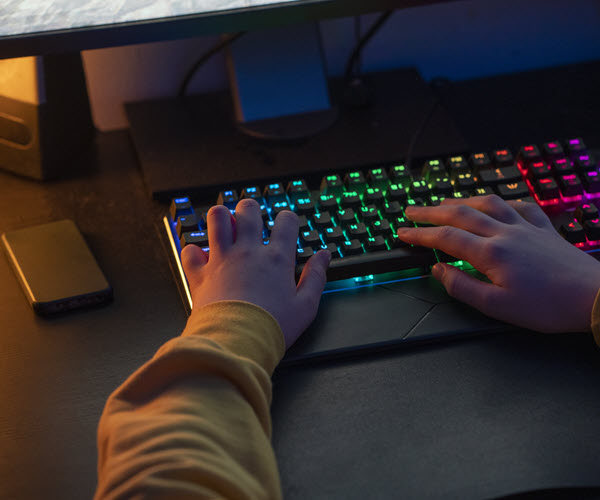
Cherry MX keycaps are typically made from ABS or PBT. The latter is more durable, but also more expensive. Other types, such as the “jelly”-like POM keycaps, are gaining popularity.
Cherry profile keycaps have angled tops and are sculpted across each row to better meet your fingers.
New aesthetics enter the market every day, so there are plenty of options when choosing the appearance of a Cherry MX keycap.
Check out our full blog “Cherry MX Keycaps: Everything You Need To Know” for more info.
Did You Know? Handy HHKB accessories such as a keyboard lid and adjustable stand help make the most of your board. Click here to learn more.
For more mechanical keyboard keycap recommendations, read “The 5 Best Keycaps For Mechanical Keyboard Enthusiasts” or “5 of the Best Keycap Sets You Can Buy Right Now.”
Want more striking keycap styles? Read our blog post “7 Wild Keycap Styles For Your Next Custom Build.”
W is forward, A is left, S is back, and D is right. Today, WASD is the standard directional input layout for countless PC games. For gamers, the WASD keys are likely to see a lot of use, so it can be beneficial to use keycaps made specifically for those four keys. Here are some of the options.
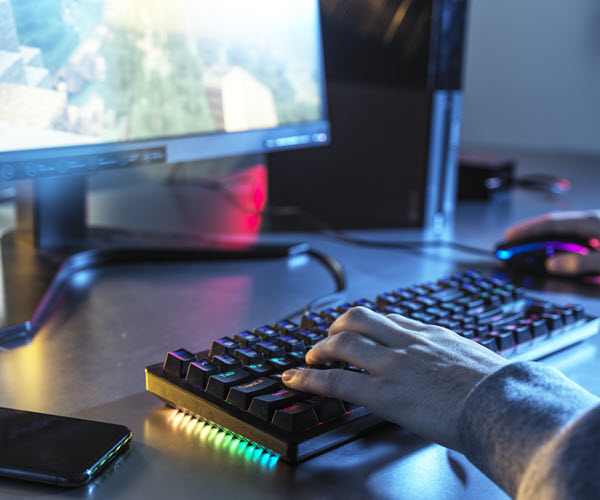
Check out “WASD Keycaps: 6 Stylish Options For Your Gaming Setup” or for more options to spice up your gaming keyboard.
If you want a sort of dreamy bloom for your keyboard, the POM Jelly Sugarcube keycaps from Escape Keyboard are a good fit. The design allows for a diffused, but bright, lighting setup.
The G.SKILL Crystal Crown keycaps combine simple elegance and otherworldly pudding keys into a coherent design. They feature transparent sides that allow you to admire your switches, with a translucent legend and “crown” around their perimeter to provoke visual interest.
LavaCaps Pudding Keycaps cause each keycap to emit a beautifully diffused glow, with opaque tops that create a silhouette effect.
Find the best keycaps for every type of keyboard with our guide, “RGB Keycaps: 5 Sets That Let Your Light Shine Through.”
Most mass-market mechanical keyboards come pre-installed with a set of keycaps, but you may find yourself wanting to swap them out for a variety of reasons. Luckily, boutique shops exist that will have bare boards and replacement keycaps.
Be sure to double-check your board for compatibility before buying any keycaps. As long as your board is compatible with Cherry MX-style switches, you can mix and match between styles and brands to your heart’s content.
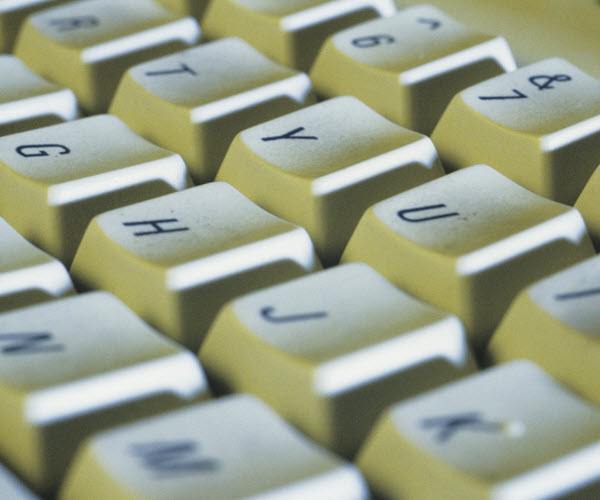
Drop works with community-favorite creators to bring unique new designs to market. It’s essentially a hub for curated community favorites. However, it doesn’t have an endless selection like some of its competitors, and its boutique nature means it isn’t the cheapest option.
If you're looking for a range of prices and styles, Kbdfans has you covered. Kbdfans is a one-stop shop for keyboard enthusiasts, with an ample selection of keycaps to peruse.
Beginners will want to turn their attention to KeebsForAll. The site is built to be welcoming to newcomers, with accessible prices and a 14-day return policy.
Want to find even more great keycaps for your mechanical keyboard? Check out our guide, “The 5 Best Places to Get Replacement Keycaps For Your Mechanical Keyboard.”
If you want to make cute clay caps, tinymakesthings is the channel for you. Tinymakesthings will show you how to shape and bake clay keycaps using existing PBT caps, turning the hobby into a more accessible medium.
Those that would rather read guides than watch them should turn to Mihi Mini Studio, which features a written tutorial series for creating artisan keycaps. It will cover shaping clay, painting keycaps, and all the materials you’ll need along the way.
Need inspiration? The fine folks over at r/Keycaps, a subreddit dedicated to the hobby, have plenty to offer. The forum sees regular posts from keycap artisans, each with their own creative designs.
Find the perfect keycaps for every board in your collection with our guide, “4 Places to Learn How to Make Artisan Keycaps.”